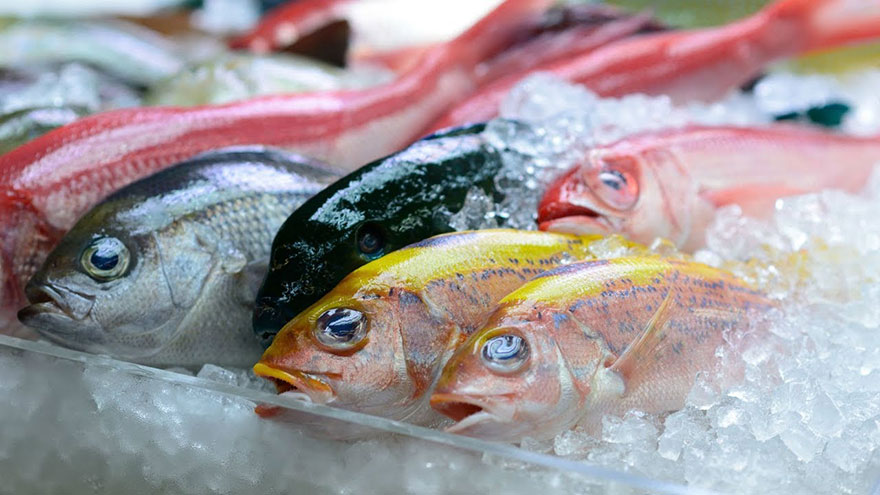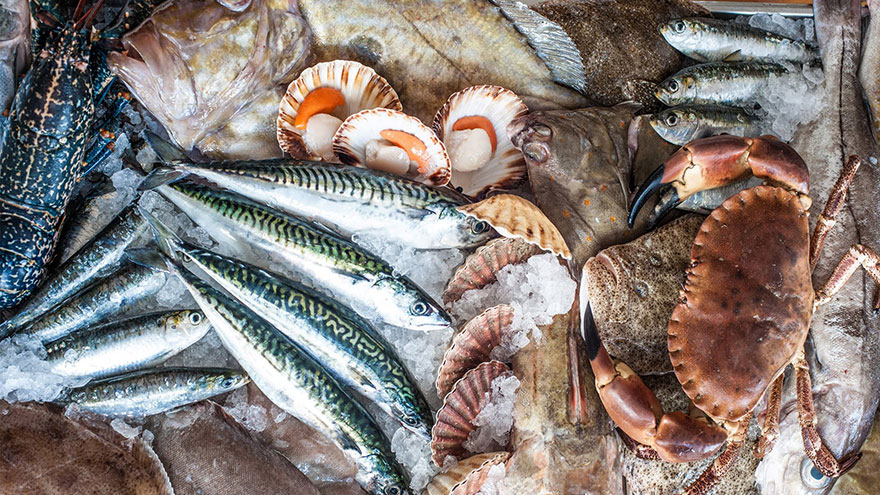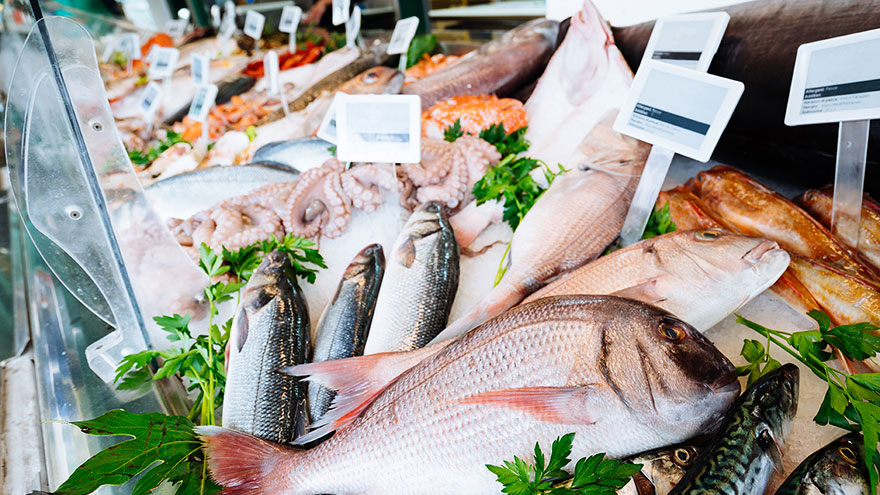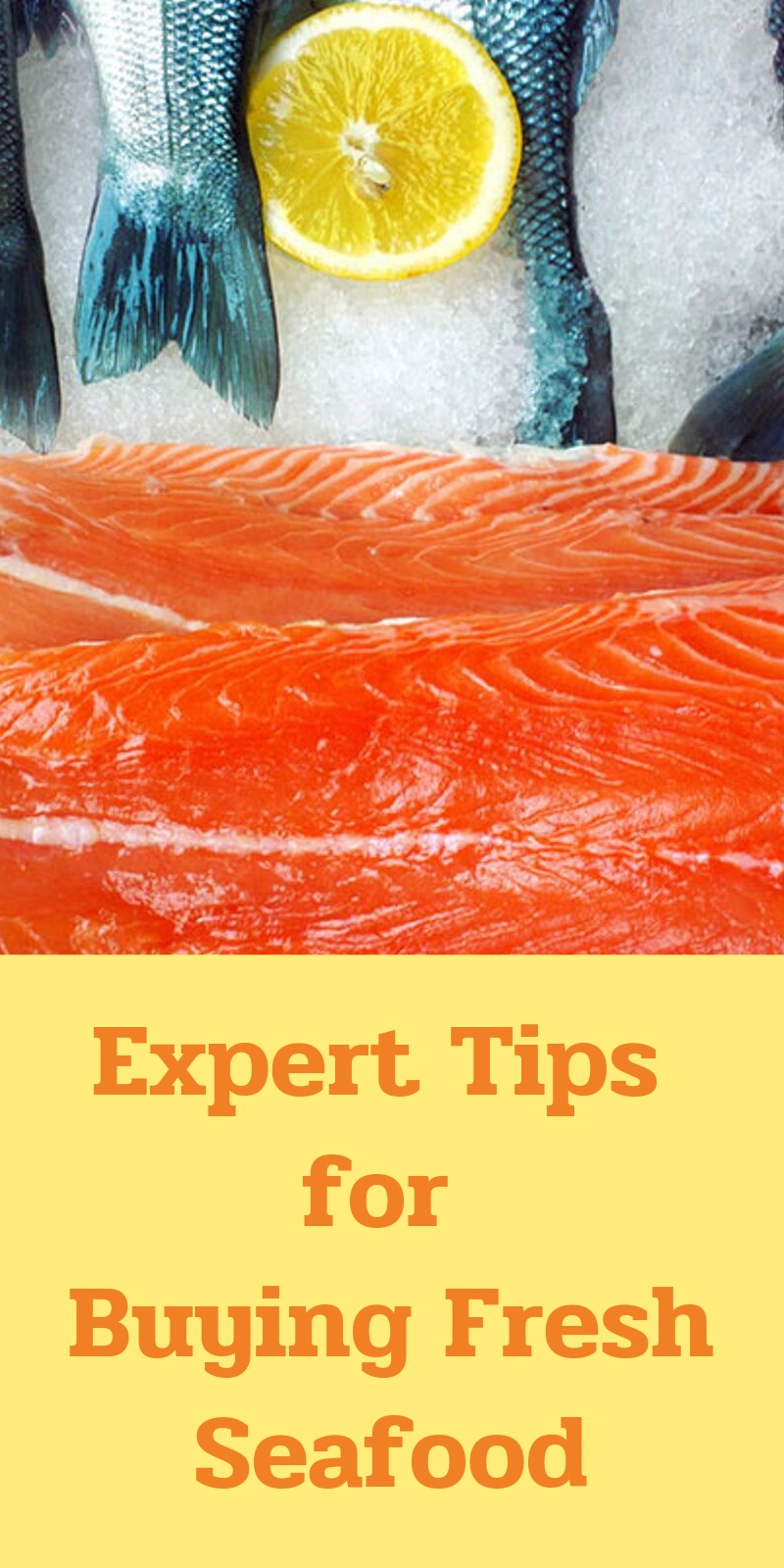Expert Tips for Buying Fresh Seafood
Are you certain the seafood you buy is as fresh as possible? Anything less than fresh means your finished meal will not only have compromised flavor, but could also be unhealthy. Here’s how to know you’re buying the freshest fish and shellfish available.
Fresh vs. Frozen
Once upon a time, frozen seafood was inferior to fresh seafood. Today, however, the best frozen seafood is as good as – and sometimes better than – what you can buy fresh. This is because instant freezing techniques are employed by better distributors.
Once the fish is caught, it’s frozen on the ship using a method called “flash freezing,” which allows the seafood to freeze quite quickly. Therefore, flash frozen seafood can be superior to something that’s been sitting fresh in the supermarket.
Still, if you live near the ocean and have a seafood market nearby, fresh seafood still may be a better choice – as long as it really is fresh.

How to Buy Fresh Fish
When buying fresh seafood, use the same rule of thumb you should when choosing a restaurant to dine at: If the place is dirty or ill-kept, go elsewhere. Poorly cleaned fish stalls, stores, or restaurants are a sign that those operating the establishment probably aren’t very careful about safely handling their product.

Also pay attention to how the fish is stored. It should always be refrigerated or kept on cold ice at 32 degrees F.
Next, Look at the Product Itself
- No seafood should have a strong fishy odor. All seafood should have a mild scent.
- Look for fish with protruding eyes that are clear, not cloudy.
- Fish gills should be red with blood.
- Always press down on the flesh of the fish. It should be firm and spring back from your touch. A fish can look fresh due to chemicals added by dishonest fishmongers, but if it doesn’t feel fresh, shop elsewhere.
- Squid should have clear eyes, also, and creamy skin with brownish-red spots. (If the squid is turning bad, its skin will be pinker.) Squid flesh should be quite firm.
- Shellfish should have moist and shiny shells.
- Clams, mussels, and oysters must be sold live, since they begin to deteriorate as soon as they die. Look for shells that are snugly closed and without splits. If the shells are open a little, tap them. If they close, they are still good.
- Crabs and lobster should also be sold alive, since they spoil quickly once dead. Look for active lobsters or crabs; if they’ve been refrigerated, they’ll move less, but should still move some.
- For shrimp, look for mild-smelling and firm flesh without blemishes.
- Prepared fish fillets should have very little liquid in their packaging. The flesh should also be free from blemishes.
- Always pay attention to where the seafood was caught. According to law, all seafood must be marked with the country of origin. The United States, Canada, New Zealand, and Iceland have the best fishing management practices in the world.
Storing and Using
If the day is warm, ask for an ice-filled bag to carry the seafood. Better yet, bring an ice-filled, insulated cooler with you. However, don’t put live seafood in a sealed container; it will die and deteriorate quickly.
As soon as possible, store fresh seafood in the refrigerator. Use it within two days. Store all seafood in a bowl covered with a moist towel. Especially if the seafood is a type you’ve never cooked before, start with a trusted recipe.


Check out the video version of this article on YouTube

